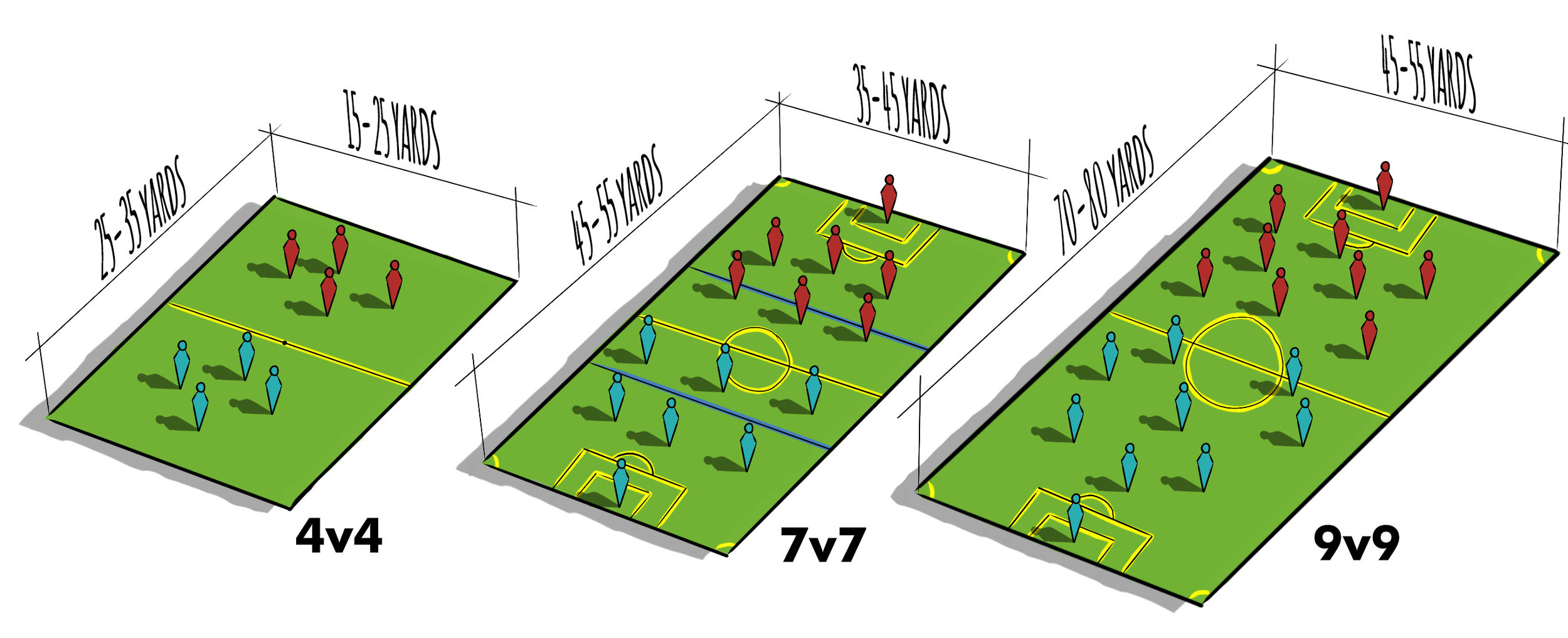Understanding The New Youth Soccer Guidelines
by Andy Patton
As a landscape architect called upon to help athletic and park directors design their best athletic fields, the changes in American soccer standards intrigue me. I have looked in to the changes and want to share what I've learned and what it will mean to school and park districts that need to update their fields.
Full discloser: I'm a soccer player; the game has dominated over half my life. When I started soccer at age four, I played the typical "mob ball" with all the youngsters until I was old enough to play in the 8V8 league. Youth players today won't play the same sized games I did until they are 12 years old.
Smaller Fields and Smaller Team-Sizes
In 2015 U.S. Soccer standardized smaller sided games for all age groups under 12. When I grew up, youth soccer teams were 8v8 until you hit 12, at which point they matched adult leagues with 11 players on each team. Since 2015 the number of players per team is determined by age groups and the fields sizes for each age category have been reduced.
Smaller sided games encourage skill development for the natural stages of physical development. Younger soccer players benefit from smaller fields where they can spend less time running and have more time trying to execute plays.
I think this is a terrific development in youth soccer. The smaller pitch and player count force players to think and act quickly. This type of quick decision-making and physical activity can be a huge boon to the creative development of our young players' brains. (This is based on my own--decidedly unscientific--research!)
The tighter space also encourages better ball control and technical finesse, and gives each player a chance to have a meaningful role in each game.
After the first few years, team and field sizes gradually increase, allowing more physically advanced players to increase their skills and heighten the competition between teams.
Adjusting Soccer Fields for Smaller Sided Games is Easy
Youth soccer on synthetic turf at Highland Heritage Park West Fields.
Sod Fields
If your current fields are open rectangular sod fields, you need to re-stripe your fields based on the new dimensions and re-structure your programming.
Beginning at the under-9 age level, you also need to add a “build out line” striped from sideline to sideline 14 yards in front of each goal. (This encourages younger players to play the ball up the field quicker--another great benefit of smaller pitches!)
Synthetic Turf Fields
Adjusting synthetic turf fields is trickier. Hiring a landscape architect to help design new synthetic fields is usually the easiest way to get the best results that last the longest time.
My colleague and co-blogger, Erik Spring, recently wrote a great blog basics of synthetic turf and their best application.
My early glory days of youth soccer.
American Soccer Keeps Getting Better
I think the new field and player standards are a great step toward American soccer becoming a power on the world stage. As these young players move up the ranks, our soccer programs will produce a more consistent breadth of talent, and a larger pool of players that can compete against--and beat--the big international teams.
See It In Action
Check out the fields at Highland Heritage Regional Park that we helped Douglas County Parks implement as the first of the new field guidelines striped in synthetic turf in Colorado. Those fields also include striping for football and lacrosse (LAX).
Find Out More
The U.S. Soccer Association is a great resource to learn more about all things soccer.
This is part of a four-part series on landscape architecture and athletic field design. See Erik's blog on Synthetic Turf Basics and Dave's examination of the science behind athletic field design in a post on GIS field analysis. Check back next week to see Carol’s How to Ace Your Tennis Court Replacement.







